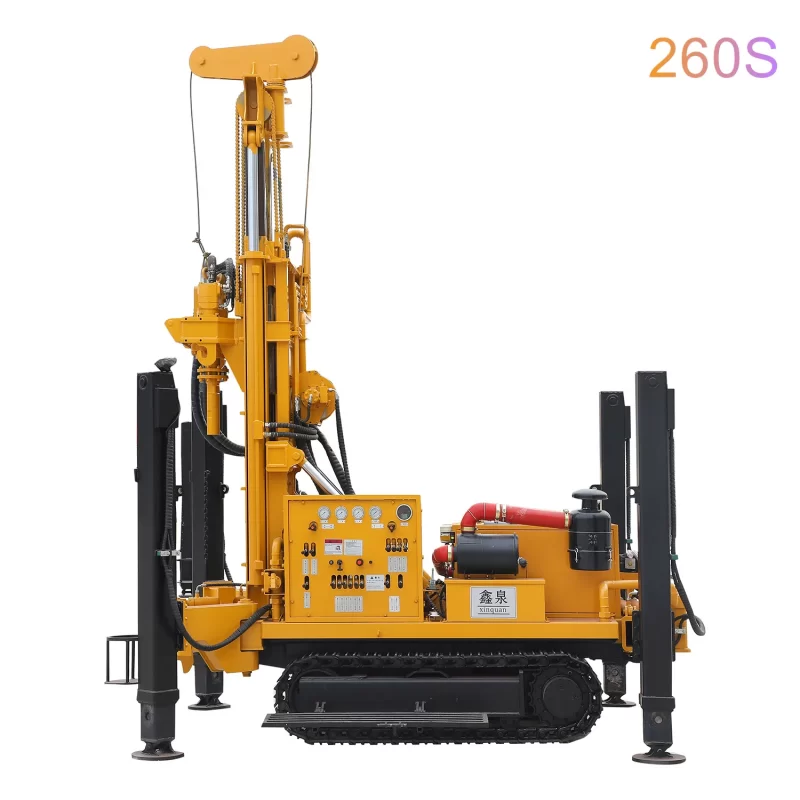Do you know the working principle of the water well drilling rig?
Water Well Drill rigs: Classification & Characteristics
Break rock via rotation. Suitable for soil, gravel, and soft rock.
Reverse/Forward Circulation: Use mud pumps. Reverse circulation removes cuttings faster via drill pipe suction.
Hydraulic Powerhead Drills: Hydraulic motors drive rotation.
Down-the-hole Rotary Hammers: Combine vibration and rotation.
 2. Percussion Drills
2. Percussion Drills
Shatter rock with vertical impacts. Ideal for gravel or fractured rock.
Grab Cones: Self-weight penetrates soil. Manual cuttings removal.
Cable Tool Drills: Electric motors drive up/down motion.
3. Compound Drills
Merge rotary and percussion functions. Adapt to complex geology.
Dual-mode Rotary/Percussion: Primarily rotary. Switch to percussion in gravel layers.
Down-the-hole Hammers: High-frequency impacts via compressed air.
Working Principles
Rotary: Drill pipe rotates. Mud/air circulates cuttings. Forward: mud returns outside pipe. Reverse: vacuum sucks cuttings through pipe.
Percussion: Drill bit impacts rock. Manual cuttings removal after lifting drill string.
Compound: Rotary drilling. Activate percussion in hard layers. High efficiency and adaptability.
Summary
Choose water well drilling rig based on geological conditions, well depth, and construction needs.
Rotary: Best for continuous layers. Percussion: Effective in loose gravel. Compound: Superior adaptability.
 Bangxin drilling rig
Bangxin drilling rig